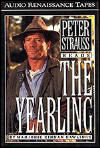From AmSAW's "It Happened in History" Series
Marjorie Kinnan was born August 8, 1896, in Washington, D.C. A writer from an early age, she won a prize of $2 for a short story published in the Washington Post in 1907. She was the youngest winner in the contest's history. And life as a writer for Marjorie Kinnan had begun.
In 1914, after graduation from high school, she moved to Wisconsin with her mother and younger brother. Her father had died the year before. In Madison, she attended the University of Wisconsin where she was a member of the women's honor society, the drama society, and the Delta Gamma Sorority. In 1918, she received her Bachelor of Arts degree in English.
![]() A year after she was graduated, she married Charles Rawlings, also a writer. The couple moved to New York, where they worked as journalists for various newspapers. From 1926 - 1928, Marjorie wrote verses for United Features Syndicate. In 1928, the couple purchased a 72-acre orange grove near Hawthorne, Florida, aptly named Cross Creek because it lay nestled between Orange Lake and Lochloosa Lake.
A year after she was graduated, she married Charles Rawlings, also a writer. The couple moved to New York, where they worked as journalists for various newspapers. From 1926 - 1928, Marjorie wrote verses for United Features Syndicate. In 1928, the couple purchased a 72-acre orange grove near Hawthorne, Florida, aptly named Cross Creek because it lay nestled between Orange Lake and Lochloosa Lake.
 In 1933, the couple divorced; but Rawlings was so drawn to the natural, untamed beauty of the land and the simplicity of the rural lifestyle that she continued to live at Cross Creek on and off for the rest of her life. In 1941, she married Norton Baskin, a hotel owner from St. Augustine, Florida, and lived with him until her death in 1953.
In 1933, the couple divorced; but Rawlings was so drawn to the natural, untamed beauty of the land and the simplicity of the rural lifestyle that she continued to live at Cross Creek on and off for the rest of her life. In 1941, she married Norton Baskin, a hotel owner from St. Augustine, Florida, and lived with him until her death in 1953.
The style in which Rawlings wrote is typically referred to as local color or regional writing because the themes that so often populate her stories and novels are about the organic fabric of rural life. Using an external voice, Rawlings wrote about characters whose internal motivations drove them to overcome often overwhelming environmental forces. Although her stories are based on the seemingly simple lives of rural people, her themes are universal.
 Rawlings sold her first two short stories in 1930. Three years later, she received the O. Henry Award for her piece, Gal Young 'Un, about a vulnerable widow living in rural Florida during the Prohibition Era. Later that year, she began The Yearling, her best-known work about a young boy named Jody who lives in rural Florida and adopts an orphaned fawn as a pet. As both the boy and the fawn grow, Jody struggles with the practical hardships of life on a farm, family relationships and expectations, and his responsibilities as he approaches adulthood. The story, which in 1939 earned Rawlings the Pulitzer Prize for fiction, was loosely based on actual events.
Rawlings sold her first two short stories in 1930. Three years later, she received the O. Henry Award for her piece, Gal Young 'Un, about a vulnerable widow living in rural Florida during the Prohibition Era. Later that year, she began The Yearling, her best-known work about a young boy named Jody who lives in rural Florida and adopts an orphaned fawn as a pet. As both the boy and the fawn grow, Jody struggles with the practical hardships of life on a farm, family relationships and expectations, and his responsibilities as he approaches adulthood. The story, which in 1939 earned Rawlings the Pulitzer Prize for fiction, was loosely based on actual events.
Rawlings continued to write until her death from a cerebral hemorrhage on December 14, 1953. Several of her books, including The Yearling, Cross Creek, and Gal Young 'Un, were made into movies.






No comments:
Post a Comment